In the second of our NFS – Not for Sale series, we are excited to share the unforgettable story of one of the most unusual and exciting watch discoveries of the past decade: the Patek Philippe Backpack. If you like Indiana Jones, stories of real treasure hunting, global intrigue, politics, and a twist of Masonic secrecy, then this story is for you.
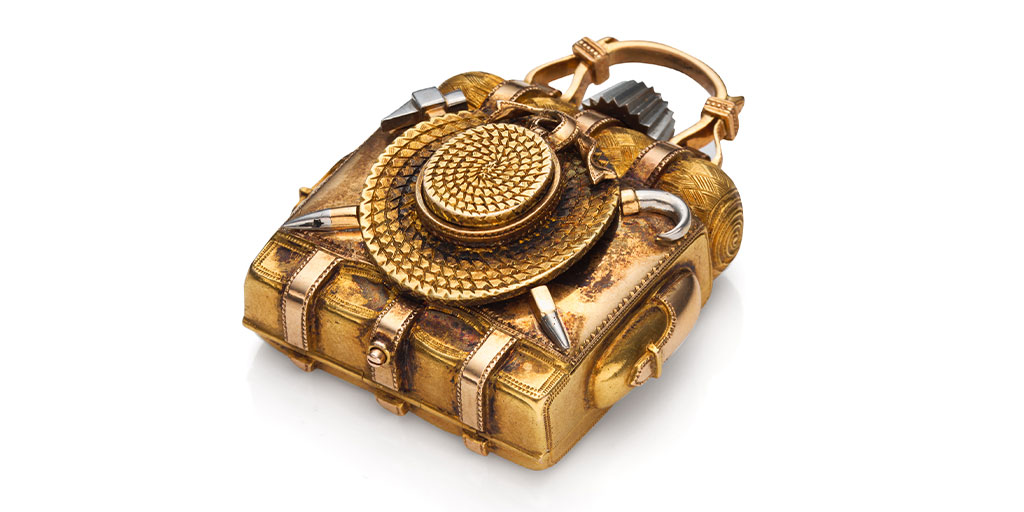
To start, we need to go back to the 1880s and learn about the man who commissioned this unique watch: Judge Elbert E. Farman. Born in the USA, Elbert finished his undergraduate degree at Amherst and then studied Egyptian history, language and international law at the Universities of Berlin and Heidelberg. By the 1870s, he was a rising star in academic and political circles with a specialization in Egyptology. To say he was obsessed with exploration and Egypt is an understatement. And we also understand he had another obsession: Patek Philippe. He commissioned this very unusual watch in 1875 and it is a watch unlike anything that Patek ever made before (or after) in the form of an Egyptian archeologist’s backpack complete with two pickaxes, a straw desert hat, and is possibly filled with hidden symbolism lost to time. This is the stuff of legends — and Masonic ritualism.
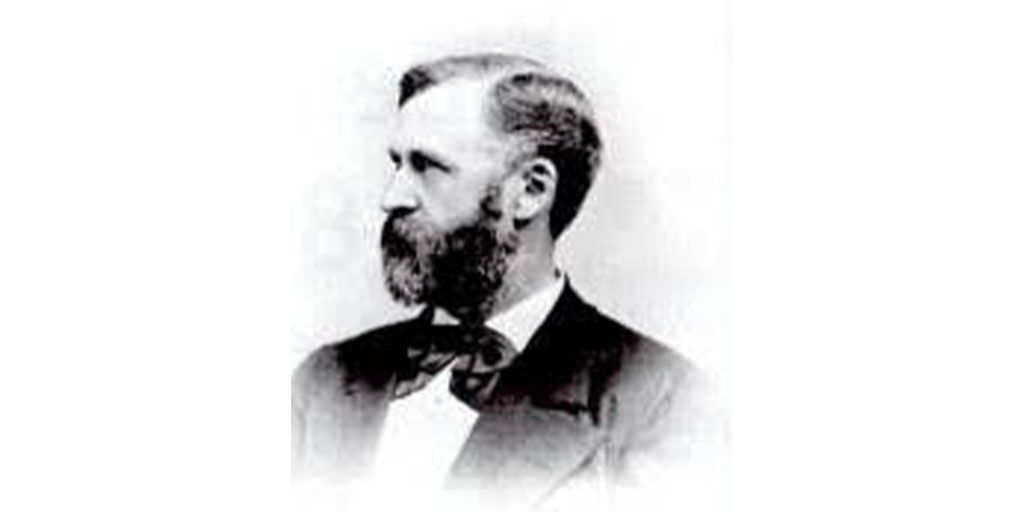
Before we look more closely at this watch, let’s look back at a couple of historical events related to Elbert E. Farman to help us understand the man himself. First, we need to go back to January 1878, when former President Ulysses S. Grant and his wife embarked on a world tour to celebrate the end of his presidency. Farman was assigned as the guide and translator to Grant’s entourage during their trip to Egypt where they studied antiquities. Farman was already a well-known and respected Egyptologist by this time, hence why he was selected as guide. During their travels, Farman introduced Grant to the Khedive of Egypt, a meeting which would later lead to the installation of the obelisk known as Cleopatra’s Needle in Central Park, New York. Their adventures are documented in the book ‘Along the Nile with General Grant’.

During the 1880s, Farman stayed in Egypt and was the US Consul General at Cairo. He fought to end slavery in Egypt and reported back to the State Department on agricultural, political, and commercial issues. Most notably, he negotiated and secured the obelisk from the Khedive. This turned out to be his immortal legacy. In his book, ‘Egypt and Its Betrayal’, Farman includes two chapters on his role in getting the obelisk to New York, which was no easy task. Railroad mogul William Vanderbilt financed the transport to New York from Alexandria. It was a treacherous and well documented adventure headed up by the celebrated Navy commander Henry Honychurch Gorringe. It took a month at sea with the obelisk literally sticking out of the boat’s hull, and five more months to get it from the Hudson River to the place where it stands today in Central Park. Farman, together presumably with his watch, was part of the process every step of the way.
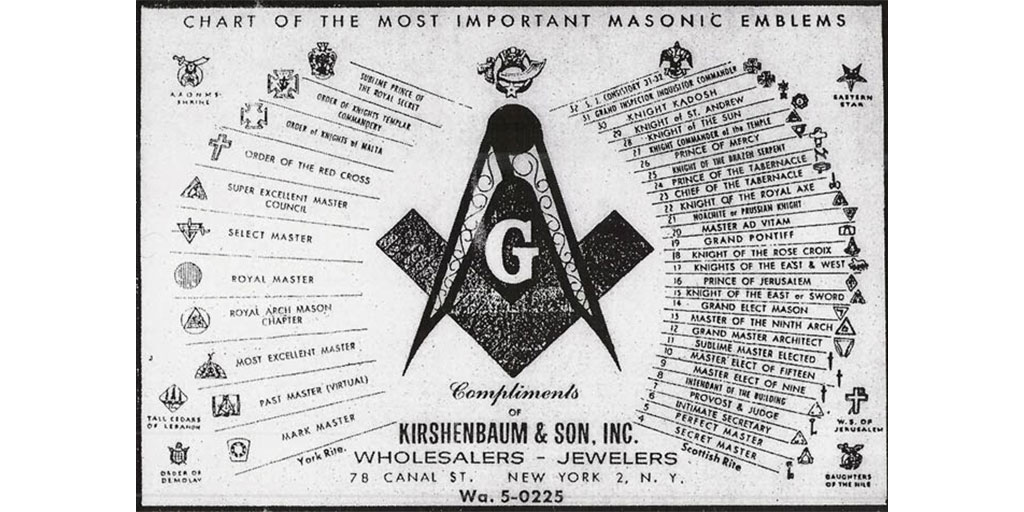
Now back to a bit of intrigue. When the obelisk was unearthed in Egypt, there were Masonic symbols found around its foundation. Vanderbilt and Gorringe were excited by these findings, as well as what seemed like all of New York society at time. When the obelisk was set, Farman (also a Mason) and the benefactors were on hand, together with with 9,000 fellow Masons that marched from midtown to the obelisk, with over 50,000 New Yorkers cheering them on. It was truly Egypt-mania. And you can imagine that this little watch was quite the conversation starter at the time. The watch represented treasure hunting then as it does today — and mystery.
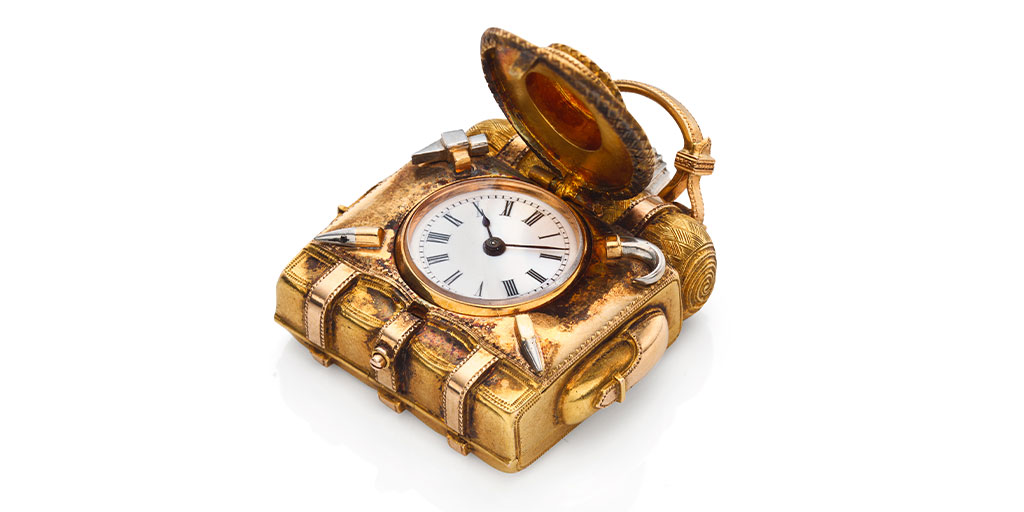
Let’s look more closely at the watch itself. The watch was commissioned by Farman in 1875 and he received it on March 18th, 1876 (an important centennial year for America). The unique design, in the shape of an explorer’s backpack is fascinating. It is made in 18K gold with platinum accents such as the blades of the pickaxes and the winding crown in the shape of a cup or bowl.
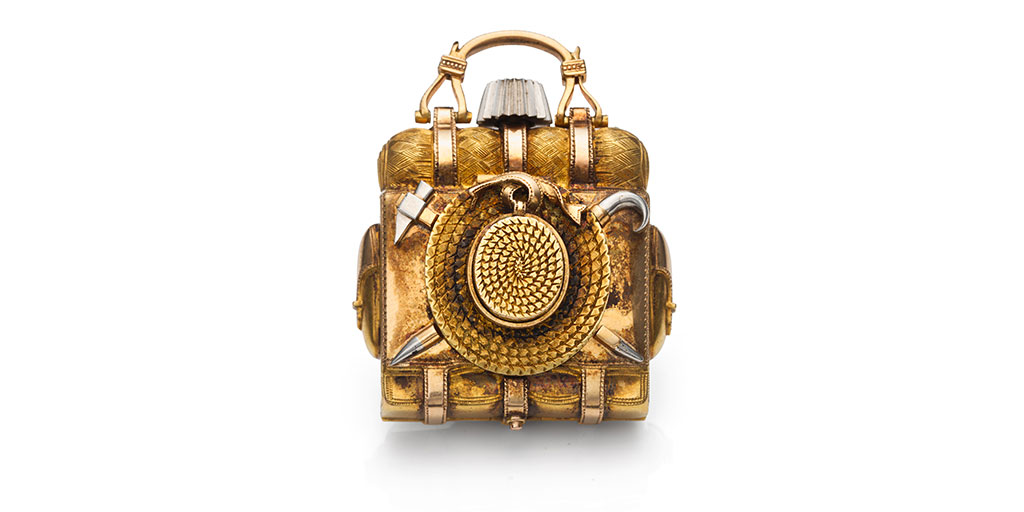
One imagines that the backpack is a replica of his own backpack that he carried on many adventures. When working with Patek Philippe on the design, he requested that it include certain items that symbolized his travels. A straw hat hides the dial; two pickaxes are strapped underneath the hat, and a roll of bedding is tied on the top. This is a timepiece meant for conversation, something he would have taken out at a dinner party, or when meeting with presidents and dignitaries while he spoke about his travels and the importance of finding and preserving antiquities.
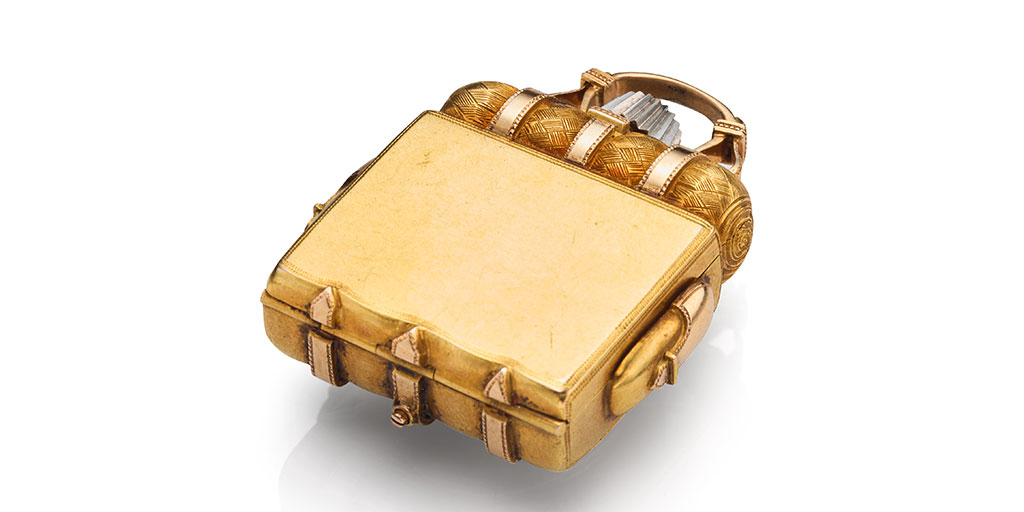
Because this was such a personal watch, there may well be unknown symbols hidden within the design. During the 19th century, symbolism within watch design cannot be underestimated. For example, maybe the movement number, 50. 607 – seven being a magical number in the world of masonic tradition – could have been specifically requested by Farman; the number of straps we see on the backpack; the number of sides on the platinum crown shaped like a cup or bowl; the way that the side pockets are cut and hand-engraved; even the mysterious swirl on the side of the folded bedding blanket could mean something. I still think there are secrets to be revealed.
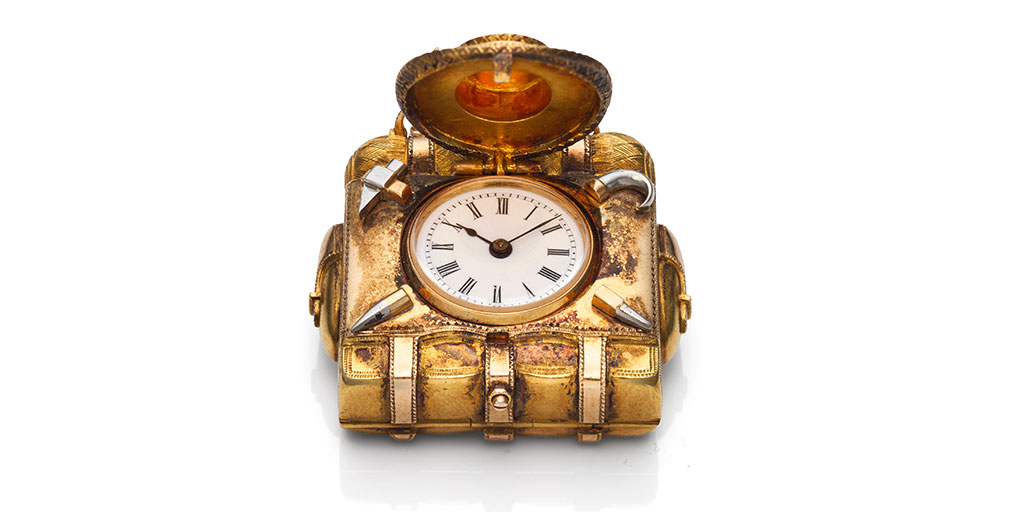
Farman’s legacy lives on in New York with the obelisk, and here within this watch. A treasure for generations past and present. The current owner bought this at auction in December 2019, my last New York sale with Christie’s. My former colleague, Ryan Chong found the watch and I frankly thought it should have brought millions. The lucky visionary of an owner bought it for 62,500 USD. I want to thank that gentleman for letting me see and study this watch in person once again and share it here. It is one of the most historically important Patek Philippe watches I have ever held in my hands and its future relevance cannot be underestimated. It really is a watch shrouded in mystery, adventure, and intrigue, and belongs in the Patek Philippe Museum. Until then, the lucky collector that owns this piece is cherishing it as his prized possession. And it is Not for Sale.
To learn more about the history behind this watch, please see this Collectability video.


